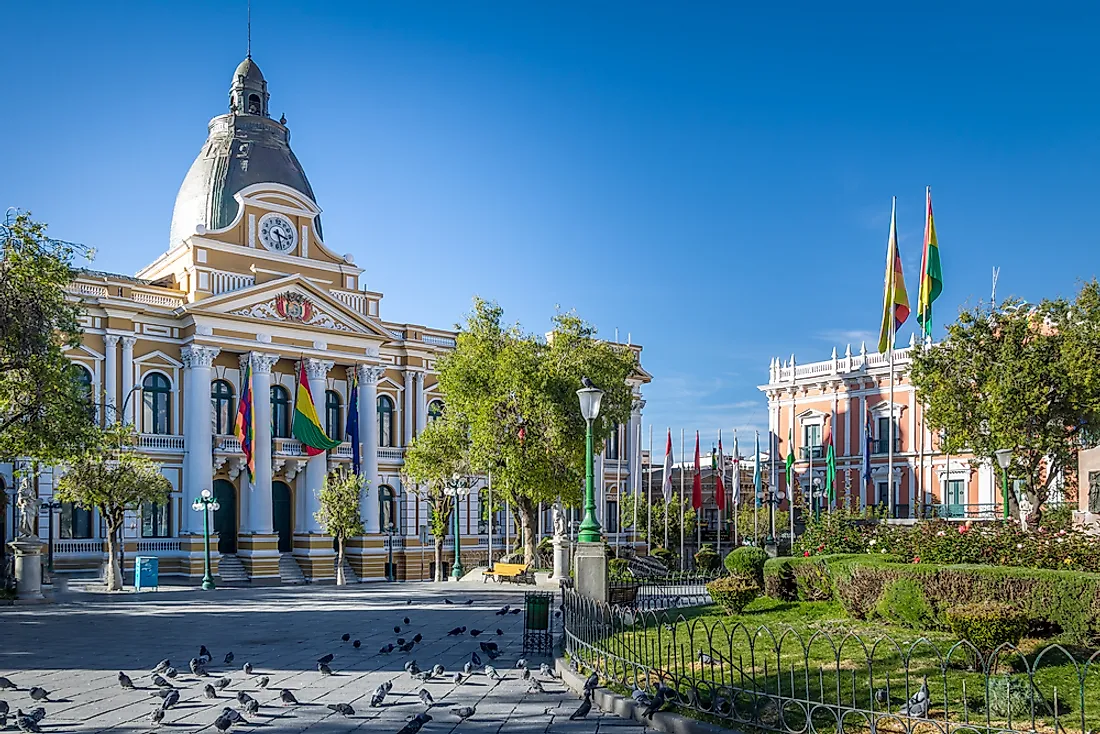What Is The Capital Of Bolivia?

While the majority of countries around the world have established one specific city as the political capital, this is not the case in Bolivia. In this country, the 3 branches of government are divided between two cities: Sucre and La Paz. Sucre is the center for the judicial branch and La Paz is the seat of both the executive and legislative branches. The story behind this division in government has its roots in the Spanish colonial area. This article takes a closer look at the history behind these two capital cities.
History Of Bolivia's Two Capital Cities
At the time of its official recognition of Sucre as the capital, Bolivia was also investing in and developing its metal mining industry. Of particular significance were both silver and tin, which were found in heavy concentrations just west of Sucre, in the town of Polosí. The owners of these mines lived in both Sucre and La Paz. The majority of the silver mine owners were in Sucre, and the majority of the tin mine owners were in La Paz, which was located near other large tin mining operations. During these years, the tin industry was relatively new and quickly surpassed the silver mining industry in revenues.
As Bolivia was a newly independent nation, it experienced significant political unrest. By 1899, two powerful political parties had been formed: the Liberal Party and the Conservative Party. As it turned out, the mine owners were split between these two parties. The silver mine owners living in Sucre were members of the Conservative Party and the tin mine owners living in La Paz were members of the Liberal Party. The Liberal Party came to overpower the Conservatives in the War of 1899 and decided to relocate the seat of government to the city of La Paz.
Sucre
Sucre was first established as a city under colonial rule in 1538. During this time, the South American continent was divided into viceroyalties, large areas administered by a viceroy. Around two decades later, King Philip II founded the Audiencia de Charcas (the Royal Audience of Charcas) in Sucre as part of the Viceroyalty of Peru. It remained part of this viceroyalty until 1776 when it became part of the Viceroyalty of the Río de la Plata. Bolivia won its independence in 1825 and in 1826, Sucre was named the provisional capital, and in 1839, it became the official capital.
Today, it is the only constitutionally recognized capital of Bolivia. However, the only branch of government administered from Sucre is the judicial branch. The Supreme Court of Bolivia is in this city.
La Paz
La Paz was founded under Spanish rule in 1548; previously, it was an important Inca settlement. At this time, it was situated in the Viceroyalty of the Río de la Plata and was valued for its location along the trade route between Potosí and Lima (in what is present-day Peru). In 1781, indigenous groups led an uprising against the Spanish colonial powers here, destroying Catholic churches and government buildings. La Paz was also involved in the 1809 revolt that eventually led to the independence of Bolivia. As previously mentioned, La Paz became the new national seat of government in 1899, which marked the economic movement away from silver mining and toward tin mining. This industrial change affected the political and economic power within the country.
Today, the presidential palace (Palacio Quemado) is located here and serves as the seat of the executive branch of government. Additionally, the Plurinational Legislative Assembly is found in La Paz. This legislative body consists of the Chamber of Deputies and the Senate.







